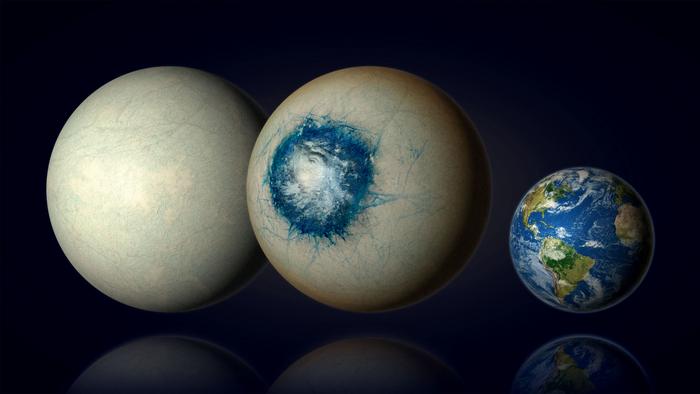Nasa finds icy ‘super-Earth’ that could be home to alien life

Scientists using Nasa’s Webb telescope have found an icy “super-Earth” that could be home to alien life.
When researchers first discovered the planet, known as LHS 1140 b, they thought it might be like a very small version of a gaseous neighbour Neptune.
But new research using Nasa data has shown that it may have an atmosphere and perhaps even liquid water. That could make it one of the more promising places to search for alien life, the researchers suggest.
LHS 1140 b orbits around a low-mass red dwarf star that is about a fifth the size of our own Sun. It is exciting to scientists because they believe it could be in the “Goldilocks’ Zone”, where it is neither too close or too far from its star and thus might have liquid water.
Liquid water is believed to be one of the key requirements for life, at least as it exists on Earth.
From their research, scientists speculate that as much as 20 per cent of the world’s mass is made up water. As such, it could look something like a giant snowball, but with an ocean in the part of the planet that faces the Sun.
“Of all currently known temperate exoplanets, LHS 1140 b could well be our best bet to one day indirectly confirm liquid water on the surface of an alien world beyond our Solar System,” said Charles Cadieux, lead author of the new study, from Université de Montréal. “This would be a major milestone in the search for potentially habitable exoplanets.”
But researchers will need much more time to confirm whether the world really has an Earth-like atmosphere and liquid water. Even Nasa’s Webb Telescope with its unprecedented sensitivity will struggle to see it – but they hope that further work will allow it to pick out the signal that would indicate the presence of carbon dioxide, which would suggest it is habitable.
“Detecting an Earth-like atmosphere on a temperate planet is pushing Webb’s capabilities to its limits - it’s feasible; we just need lots of observing time,” said René Doyon, the professor who supervised the work.
“The current hint of a nitrogen-rich atmosphere begs for confirmation with more data. We need at least one more year of observations to confirm that LHS 1140 b has an atmosphere, and likely two or three more to detect carbon dioxide.”
A paper describing the findings, ‘Transmission Spectroscopy of the Habitable Zone Exoplanet LHS 1140 b with JWST/NIRISS’, is available on ArXiv and will soon be published in Astrophysical Journal Letters.
Subscribe to Independent Premium to bookmark this article
Want to bookmark your favourite articles and stories to read or reference later? Start your Independent Premium subscription today.

Join our commenting forum
Join thought-provoking conversations, follow other Independent readers and see their replies
Comments